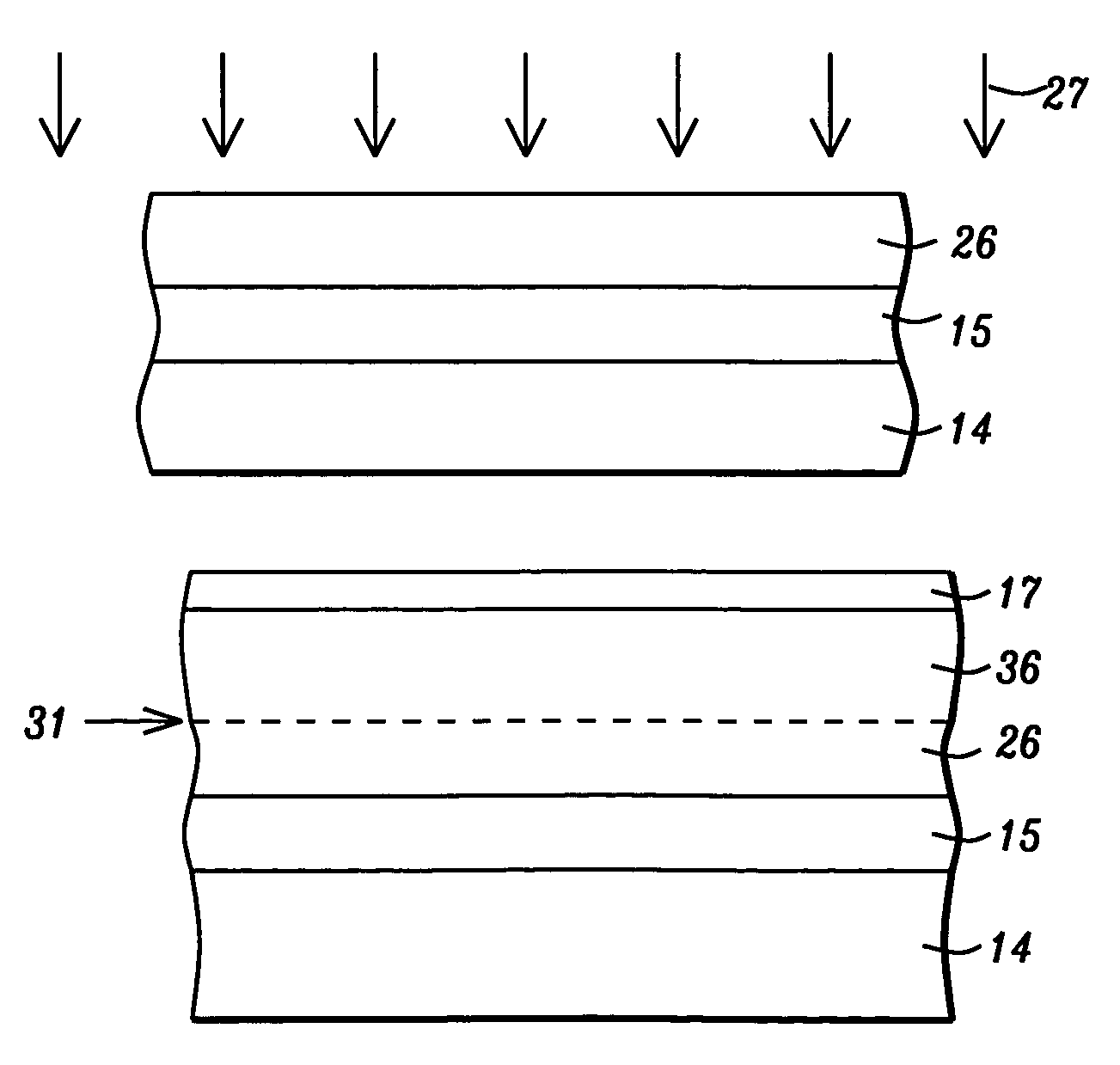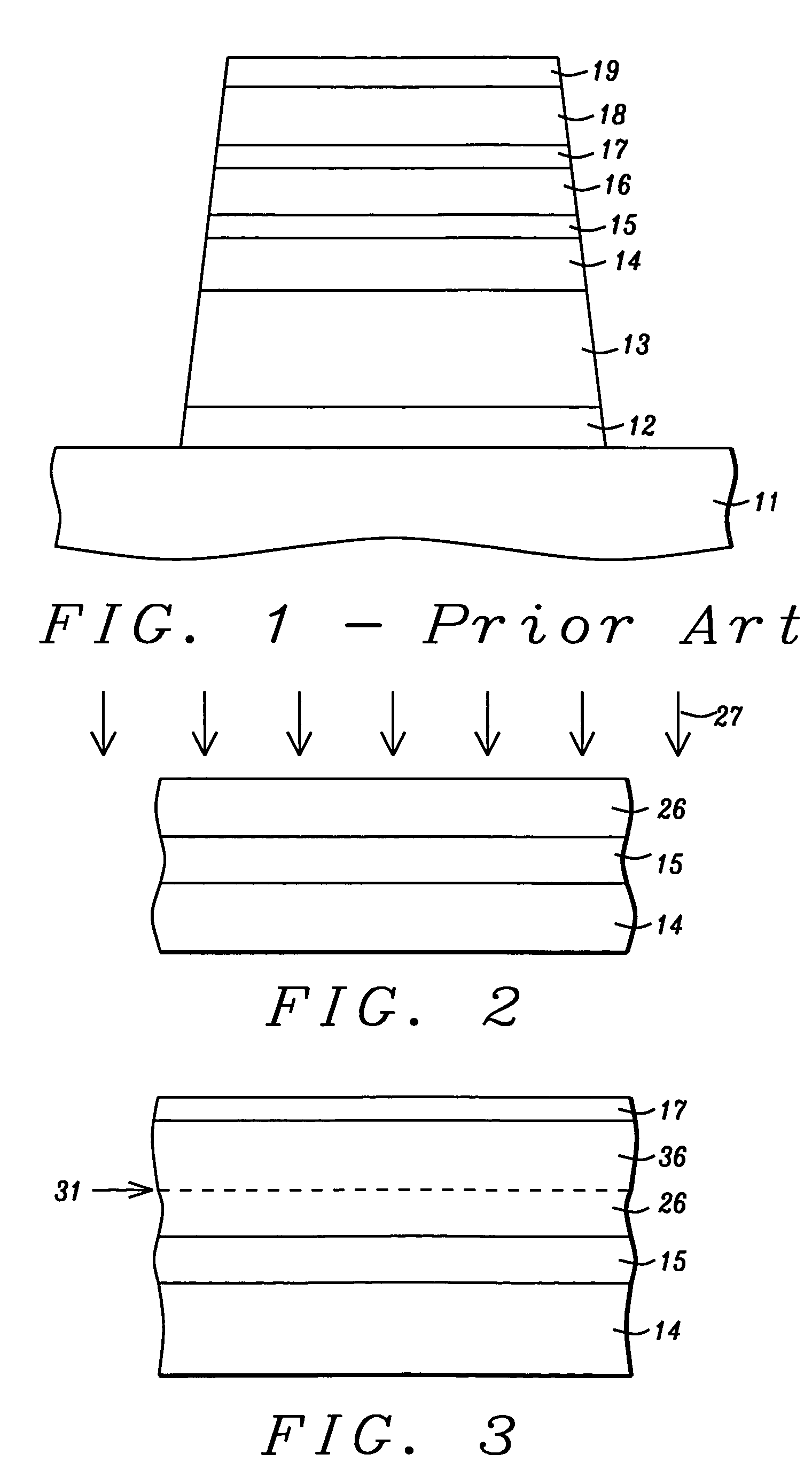Method of forming an improved AP1 layer for a TMR device
a technology of tmr device and ap1 layer, which is applied in the field of forming and structure of ap1 in, can solve the problems of introducing new problems, reducing the tmr ratio, and achieving the effect of improving the breakdown voltage and strong pinning
- Summary
- Abstract
- Description
- Claims
- Application Information
AI Technical Summary
Benefits of technology
Problems solved by technology
Method used
Image
Examples
Embodiment Construction
[0025]The basic requirements for TMR sensors are as follows:[0026]1) Low areal resistance (RA).[0027]2) High MR ratio[0028]3) Magnetically soft free layer having low magnetostriction[0029]4) Low interlayer coupling through barrier layer.[0030]5) Strong pinned layer.
[0031]To meet the requirement of low RA (less than 10 ohm.μm2), the tunnel barrier has to be very thin; for example, less than 8 Å for an alumina barrier. Two major issues related to thin barriers are 1) higher pinhole density may cause stability problems for TMR sensors, and 2) large interlayer coupling may decrease the sensitivity of the TMR sensor. So it is essential to have a smooth underlying ferromagnetic layer on which to deposit the tunnel barrier layer.
[0032]The present invention teaches how to achieve smoother barrier growth without sacrificing other requirements of the TMR sensor such as maintaining the atomic ordering at the interface between AP1 and the barrier layer. We will illustrate the structure of the p...
PUM
| Property | Measurement | Unit |
|---|---|---|
| thickness | aaaaa | aaaaa |
| thickness | aaaaa | aaaaa |
| thickness | aaaaa | aaaaa |
Abstract
Description
Claims
Application Information
 Login to View More
Login to View More - R&D
- Intellectual Property
- Life Sciences
- Materials
- Tech Scout
- Unparalleled Data Quality
- Higher Quality Content
- 60% Fewer Hallucinations
Browse by: Latest US Patents, China's latest patents, Technical Efficacy Thesaurus, Application Domain, Technology Topic, Popular Technical Reports.
© 2025 PatSnap. All rights reserved.Legal|Privacy policy|Modern Slavery Act Transparency Statement|Sitemap|About US| Contact US: help@patsnap.com


